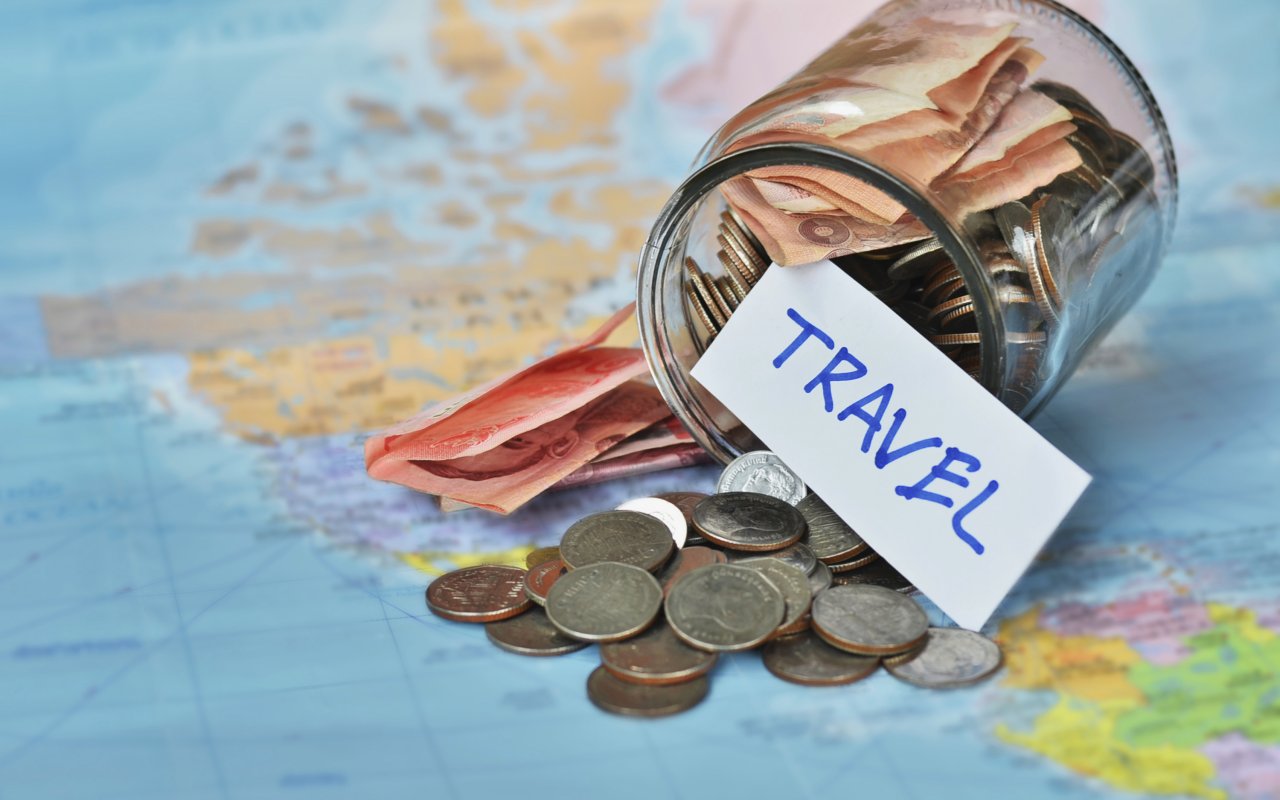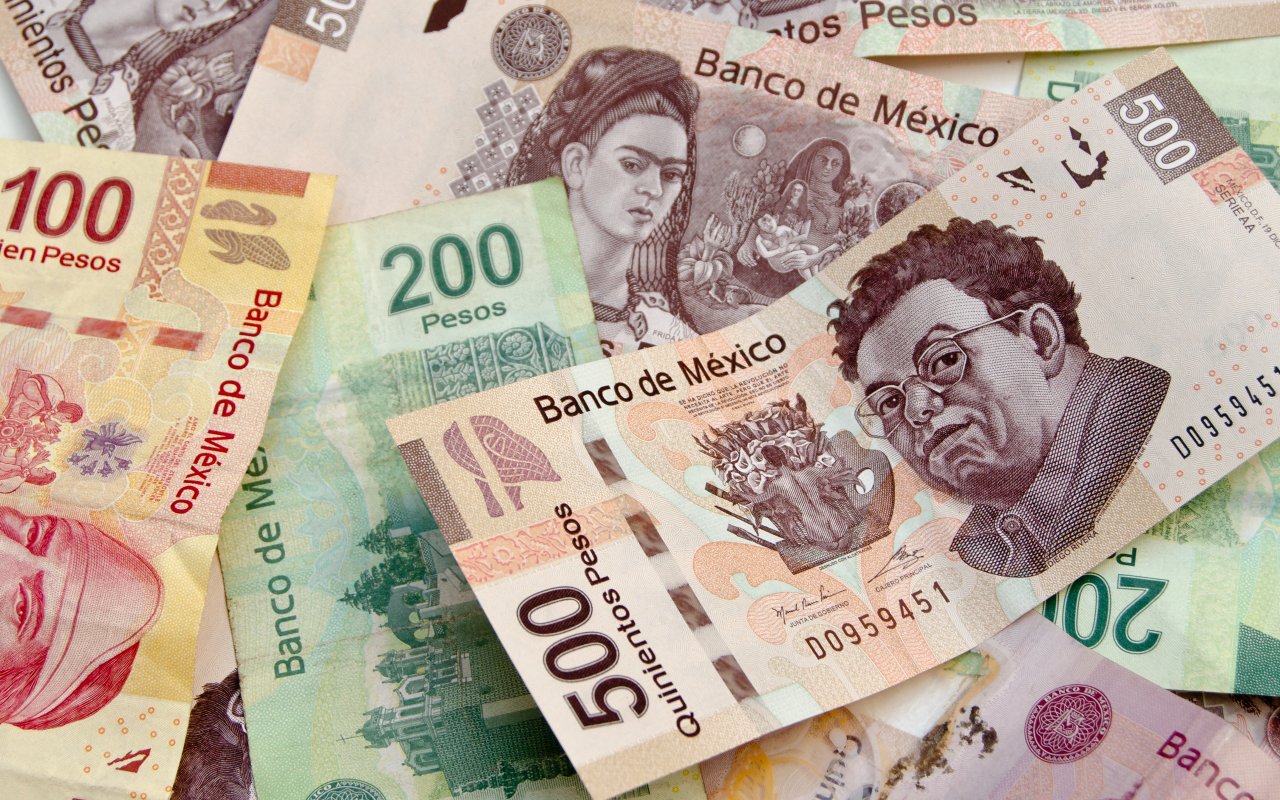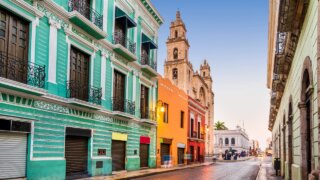Foreign Exchange and Means of Payment in Mexico
Budget for a trip to Mexico
Foreign exchange and means of payment in Mexico
Understanding Mexican currency
Mexico’s currency is the peso, represented by the symbol $, which looks identical to the US dollar sign but is crossed by only one vertical stroke. The peso is divided into 100 centavos, and you’ll find banknotes in denominations of 20, 50, 100, 200, 500, and 1,000 pesos, as well as coins in various smaller denominations.
As of November 2024, the exchange rate fluctuates around 17-20 pesos per US dollar and 18-22 pesos per euro, though these rates vary daily and differ between banks, exchange houses, and ATMs.
Best ways to handle money
We recommend bringing US dollars or euros for exchange, as these are the most widely accepted foreign currencies in Mexico. However, it’s important to note that you generally cannot pay directly with these currencies except in some heavily touristed areas like Cancún, Playa del Carmen, or Los Cabos—and even there, the exchange rates offered by merchants are typically unfavorable.
The best approach is to exchange your money for pesos regularly throughout your trip. Try to anticipate your costs ahead of time and exchange amounts that will last you a few days rather than carrying large sums of cash.
Where to exchange money
Exchange houses (casas de cambio) typically offer better rates than hotels and are found in tourist areas, shopping centers, and near major attractions. They usually have longer operating hours than banks and don’t charge commission fees.
Banks generally offer competitive exchange rates, though they may charge commission fees. Banking hours are typically Monday through Friday from 9 AM to 4 PM, with some branches open on Saturday mornings.
Airport exchange counters are convenient but offer the least favorable rates. If you need pesos immediately upon arrival, exchange only a small amount at the airport and find better rates in the city.
Credit cards and ATMs
The most commonly accepted credit cards in Mexico are Visa, Mastercard, and American Express. Credit cards are widely accepted in hotels, restaurants, and shops in cities and tourist areas, though smaller establishments and rural areas may only accept cash.
ATMs (cajeros automáticos) are easily found in cities and tourist destinations, often in bank branches, shopping centers, and convenience stores like OXXO or 7-Eleven. They typically offer good exchange rates and are a convenient way to obtain pesos. Be aware that your home bank may charge foreign transaction fees, and Mexican ATMs often charge their own fees (usually 35-50 pesos per withdrawal). Withdraw larger amounts less frequently to minimize these fees.
For security, use ATMs located inside banks during business hours when possible, and always shield the keypad when entering your PIN.
Traveler’s checks
While traveler’s checks (preferably in USD) were once considered the safest way to carry money, they’ve become increasingly difficult to use in Mexico. Many banks and exchange houses no longer accept them, and those that do may charge high fees or offer poor exchange rates. We recommend relying on a combination of ATM withdrawals and credit cards instead.
Daily costs in Mexico
Price reference table
| Item | Price (Pesos) | Price (USD) |
|---|---|---|
| Local beer (bottle/can) | 20-40 | $1-2 |
| Bottled water (1.5L) | 12-20 | $0.60-1 |
| Soda (can) | 15-25 | $0.75-1.25 |
| Coffee (café) | 25-50 | $1.25-2.50 |
| Street tacos (each) | 12-25 | $0.60-1.25 |
| Metro/subway ticket (Mexico City) | 5 | $0.25 |
| Bus ride (pesero/microbus in cities) | 8-15 | $0.40-0.75 |
| Taxi (short ride in city) | 50-100 | $2.50-5 |
| Uber (short ride in city) | 40-80 | $2-4 |
| Museum/archaeological site entrance | 50-95 | $2.50-5 |
| Major sites (Chichén Itzá, Teotihuacán, Uxmal) | 500-650 | $25-33 |
| Video camera fee at archaeological sites | 50-70 | $2.50-3.50 |
| Gasoline (per liter) | 22-25 | $1.10-1.25 |
| Full tank of gas (average car) | 800-1,200 | $40-60 |
| Internet café (per hour) | 15-30 | $0.75-1.50 |
Important note: Many museums and archaeological sites offer free admission on Sundays for Mexican residents and often for foreign visitors as well. This can result in significant savings if you plan your itinerary accordingly.
Accommodation costs
| Category | Price per night (USD) | Price per night (Pesos) | What to expect |
|---|---|---|---|
| Budget hostels | $10-20 | 200-400 | Dormitory beds, shared bathrooms, basic amenities |
| Budget hotels | $25-45 | 500-900 | Private room for 2, private bathroom, fan or A/C, basic furnishings |
| Mid-range hotels | $50-90 | 1,000-1,800 | Comfortable room, A/C, WiFi, possibly pool, breakfast included |
| Upscale hotels | $95-150 | 1,900-3,000 | High-quality amenities, excellent service, pool, restaurant, prime location |
| Luxury hotels & resorts | $150+ | 3,000+ | Premium service, spa, multiple restaurants, beachfront or exclusive location |
Price variations: Accommodation costs vary significantly by location. Beach resort destinations like Cancún, Playa del Carmen, and Tulum tend to be more expensive, while inland cities and smaller towns offer better value. Prices also fluctuate seasonally, with high season (December-April and July-August) commanding premium rates.
Restaurant and food costs
| Category | Price per meal (USD) | Price per meal (Pesos) | Where you’ll find it |
|---|---|---|---|
| Street food | $2-5 | 40-100 | Tacos, quesadillas, tamales from street vendors and markets |
| Local fondas/comedores | $4-8 | 80-160 | Simple restaurants, comida corrida (daily menu), authentic local food |
| Casual restaurants | $8-18 | 160-360 | Family restaurants, chain restaurants, comfortable dining |
| Mid-range restaurants | $18-35 | 360-700 | Good quality restaurants, varied menu, nice ambiance |
| Upscale restaurants | $35+ | 700+ | Fine dining, gourmet cuisine, excellent service, wine pairings |
Money-saving tip: The “comida corrida” or “menú del día” (daily menu) offered by local restaurants typically includes soup or salad, a main course, dessert, and a drink for a fixed price, usually between 80-150 pesos. This is an excellent way to enjoy a substantial, authentic meal at a reasonable price.
Transportation costs
Domestic flights
Flight prices within Mexico vary dramatically depending on your route, how far in advance you book, and the season. Budget airlines like Volaris and VivaAerobus offer competitive prices, with domestic flights ranging from $30-150 USD for economy tickets booked in advance. Popular routes like Mexico City to Cancún or Guadalajara to Puerto Vallarta are often more affordable due to competition.
Long-distance buses
Mexico has an excellent long-distance bus system. First-class buses (ETN, ADO, Primera Plus) are comfortable, air-conditioned, and reliable, with prices typically ranging from $20-60 USD depending on distance. Overnight buses can save you a night’s accommodation cost.
Car rental
Renting a car in Mexico costs approximately $30-60 USD per day for a basic vehicle, though prices vary by location and season. Don’t forget to factor in insurance (often $15-25 USD per day), gasoline, and toll roads (cuotas), which can be expensive but are faster and better maintained than free roads. A toll road journey from Mexico City to Acapulco, for example, can cost around 600-800 pesos in tolls alone.
Local transportation
Public transportation in Mexican cities is remarkably affordable. The Mexico City metro costs just 5 pesos per ride regardless of distance, making it one of the world’s cheapest subway systems. City buses typically cost 8-15 pesos. Uber and similar ride-sharing services are widely available in cities and often more affordable than traditional taxis.
Tipping customs in Mexico
Tipping (propina) is customary in Mexico and represents an important part of service workers’ income. Here are the standard practices:
Restaurants and cafés: Leave 10-15% of the bill for waiters. In tourist areas, 15-20% is increasingly expected for good service. If paying by credit card, don’t forget to fill in the “propina” box or cross it out if you prefer to leave cash. Never leave the tip amount blank, as unscrupulous servers might fill it in themselves.
Porters and bellhops: 20-50 pesos per bag at airports and hotels is appropriate, depending on the level of service and hotel category.
Housekeeping: 20-50 pesos per day, left daily rather than at the end of your stay (different people may clean your room).
Tour guides: 10-15% of the tour cost, or 100-200 pesos per person for half-day tours, 200-300 pesos for full-day tours.
Taxi drivers: Tipping is not mandatory for regular taxis, though rounding up the fare is appreciated. For exceptional service or help with luggage, 10-20 pesos is appropriate.
Gas station attendants: 5-10 pesos is customary, as full service is standard in Mexico.
Shopping and souvenirs
What to buy
Mexico is renowned for exceptional handicrafts and artisanal products. Popular items include:
Traditional crafts: Talavera pottery from Puebla, alebrijes (fantastical painted wooden creatures) from Oaxaca, Huichol beaded art, woven textiles from Chiapas, hammocks from Yucatán, black pottery from Oaxaca, and silver jewelry from Taxco.
Beverages: Tequila and mezcal make excellent gifts. Quality bottles start around 300 pesos and can go much higher for premium aged varieties. Purchase from reputable shops to ensure authenticity.
Textiles: Colorful ponchos, serapes, rebozos (shawls), embroidered blouses, and huipiles represent different regional traditions and make beautiful souvenirs.
Food products: Mexican vanilla, chocolate, mole paste, dried chilies, and local honey are wonderful culinary souvenirs.
Art and décor: Folk art paintings, Day of the Dead (Día de Muertos) decorations, religious folk art (ex-votos and retablos), and pre-Columbian replica sculptures.
Bargaining practices
Unlike some countries in South America, Africa, or Asia, bargaining is not standard practice in Mexico. Fixed prices are the norm in shops, supermarkets, and most markets. However, in some tourist-oriented craft markets and with street vendors, gentle negotiation may be acceptable, particularly when buying multiple items. Be respectful and don’t expect dramatic price reductions.
Important prohibitions
It is strictly forbidden to bring back the following items from Mexico:
Natural items: Shells, sand, plants, seeds, coral, and other marine or botanical specimens are protected and cannot be exported. This includes items you might find on beaches or in nature.
Cultural patrimony: Authentic archaeological artifacts, colonial-era religious items, and genuine pre-Columbian objects are considered national treasures and cannot be legally exported. Only certified replicas are permitted. Attempting to export authentic antiquities can result in serious legal consequences, including imprisonment.
Certain food products: Fresh fruits, vegetables, and meat products are generally prohibited from entering most countries due to agricultural restrictions.
When in doubt, purchase from established shops that can provide documentation proving items are legal replicas or modern creations.
| Travel style | Daily budget (USD) | Daily budget (Pesos) | What’s included |
|---|---|---|---|
| Budget backpacker | $25-40 | 500-800 | Hostel dorm, street food, local transport, free activities |
| Budget traveler | $40-70 | 800-1,400 | Budget hotel, mix of street food and restaurants, public transport, some paid attractions |
| Mid-range traveler | $70-120 | 1,400-2,400 | Comfortable hotel, restaurants, occasional taxi/Uber, tours and activities, some shopping |
| Comfort traveler | $120-200 | 2,400-4,000 | Upscale accommodation, good restaurants, private transportation, guided tours, shopping |
| Luxury traveler | $200+ | 4,000+ | Luxury hotels/resorts, fine dining, private guides, spa treatments, premium experiences |
Note: These estimates are per person and don’t include international flights. Couples sharing accommodation can reduce per-person costs. Beach destinations and tourist hotspots typically require higher budgets than inland cities and rural areas.
Money-saving tips
Travel during shoulder season: Visit Mexico between May-June or September-November to enjoy lower prices on accommodation and flights while avoiding peak tourist crowds.
Eat like a local: Street food and local fondas offer authentic, delicious meals at a fraction of restaurant prices. The food is generally safe if vendors have good hygiene practices and high customer turnover.
Use public transportation: Mexico’s buses and metro systems are efficient, safe during daylight hours, and incredibly affordable compared to taxis or rental cars.
Book accommodation outside tourist zones: Staying a few blocks away from main attractions or beaches can significantly reduce costs while still keeping you within easy reach of everything.
Take advantage of free activities: Many museums offer free admission on Sundays, beaches are free, walking tours in historic centers cost nothing, and public markets provide endless entertainment.
Buy snacks and drinks at OXXO or 7-Eleven: Convenience stores offer much better prices than tourist shops, hotels, or street vendors in tourist areas.
Withdraw larger amounts from ATMs less frequently: This minimizes transaction fees, though never withdraw more than you can safely carry and store.
Final budget considerations
When planning your Mexico budget, remember to set aside funds for:
Travel insurance: Essential coverage typically costs $30-80 for a two-week trip depending on your age and coverage level.
Visa fees: Most nationalities don’t need to pay for a tourist card, but some do. Check current requirements for your nationality.
International flights: Prices vary dramatically by departure city and season, typically ranging from $300-1,000 USD round-trip from North America, and $600-1,500 from Europe.
Emergency fund: Always keep 10-20% of your total budget as a cushion for unexpected expenses, medical issues, or opportunities.
Vaccinations and medications: Budget for any recommended vaccinations and travel medications before departure.
Mexico offers excellent value for travelers across all budget ranges. With careful planning and smart spending choices, you can experience this diverse, culturally rich country without breaking the bank. Whether you’re a backpacker surviving on street tacos or a luxury traveler enjoying beachfront resorts, Mexico accommodates every style of travel with warmth and authenticity.











